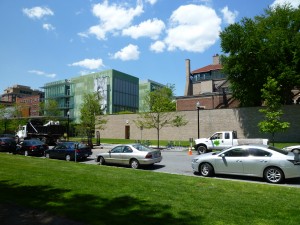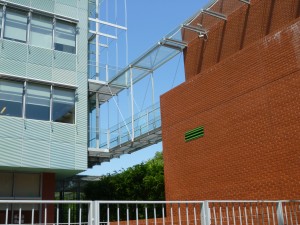I visited the Isabella Stewart Gardner Museum in Boston the other day. I had been there before, but not since the new addition, designed by Renzo Piano. Piano has become a specialist at adding to prominent buildings (Ronchamp, the Morgan Library, the High Museum, and soon the Kimbell Art Museum) and I was curious how he would respond to this rather eccentric museum–a Venetian palazzo in New England. At first glance, the new addition, clad in a green rain-screen, is distinctly odd. It seems to share nothing with its historicist neighbor. But it grew on me. I think that’s because Piano’s architecture has a certain inevitability; when there is a problem, he solves it, when there isn’t, he doesn’t. This needs saying for so many architects today put their energy into dramatically solving aesthetic problems of their own devising, which often results in complicated and eccentric buildings. The Gardner addition is neither. It neatly solves the problem of connecting to the palazzo by a) keeping its distance, and b) aligning the glass link with one of the cloisters, which produces a new entry sequence that actually improves on the original. I particularly liked the back of Piano’s building: ordinary moves but done with a light touch and a razor-sharp intelligence.




I visited the Gardner for the first time last week, and was very impressed by Piano’s addition.
He handed the connection to the historic palace (their words) deftly, has a refined sense of space and materials, and a stunning mastery of the details. You said it very well, it felt inevitable.